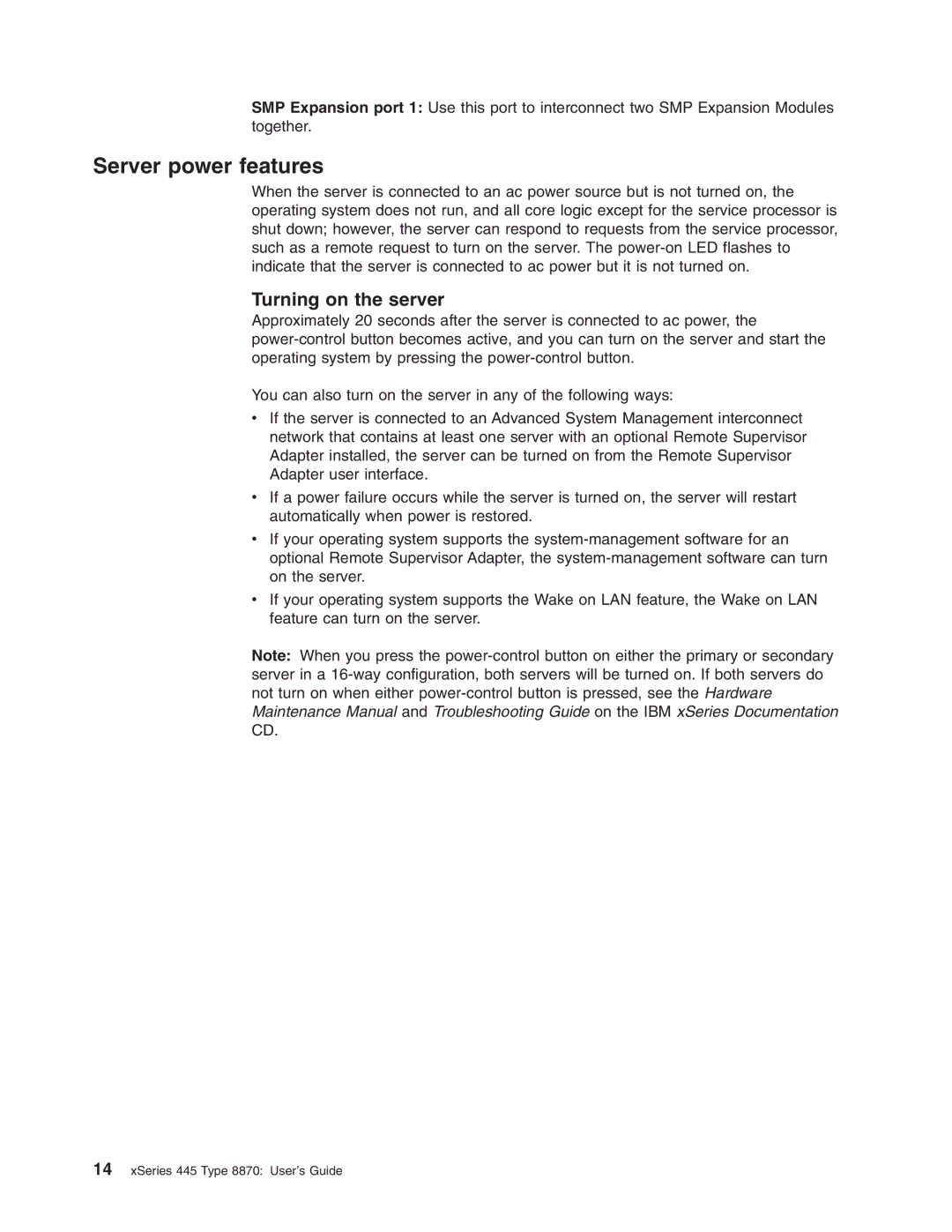SMP Expansion port 1: Use this port to interconnect two SMP Expansion Modules together.
Server power features
When the server is connected to an ac power source but is not turned on, the operating system does not run, and all core logic except for the service processor is shut down; however, the server can respond to requests from the service processor, such as a remote request to turn on the server. The
Turning on the server
Approximately 20 seconds after the server is connected to ac power, the
You can also turn on the server in any of the following ways:
vIf the server is connected to an Advanced System Management interconnect network that contains at least one server with an optional Remote Supervisor Adapter installed, the server can be turned on from the Remote Supervisor Adapter user interface.
vIf a power failure occurs while the server is turned on, the server will restart automatically when power is restored.
vIf your operating system supports the
vIf your operating system supports the Wake on LAN feature, the Wake on LAN feature can turn on the server.
Note: When you press the
